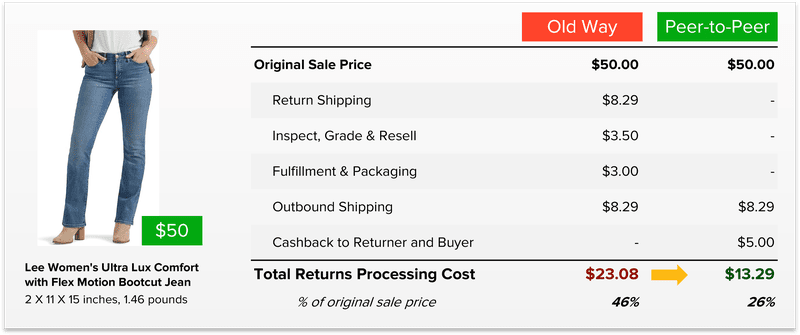What is a WMS (Warehouse Management System) and How Does It Work?

Last updated on April 01, 2025

A Warehouse Management System (WMS) is software that streamlines warehouse operations. It helps manage everything from inventory tracking to order fulfillment, making warehouse processes more efficient. If you’re looking to reduce errors and improve productivity, understanding WMS is a must.
Key Takeaways
- A Warehouse Management System (WMS) optimizes warehouse operations by managing tasks like inventory tracking, receiving, picking, packing, and shipping using real-time data.
- Implementing a WMS leads to significant cost savings by reducing labor costs, minimizing errors, and improving operational efficiency through automation and effective resource management.
- Selecting the right WMS requires careful consideration of factors like business size, industry needs, vendor reputation, and the need for flexibility in cloud-based solutions.
Understanding Warehouse Management Systems
A Warehouse Management System (WMS) is a software solution designed to manage and optimize warehouse operations, enhancing overall supply chain efficiency. Imagine having a tool that not only tracks inventory but also manages receiving, put-away, picking, packing, and shipping—all under one unified interface. This is precisely what a WMS does. Leveraging real-time data ensures smooth and efficient warehouse processes, reducing errors and enhancing productivity through inventory management software.
One of the key advantages of a WMS is its ability to provide real-time inventory tracking. This means that at any given moment, you can know exactly what inventory you have, where it is located, and its status. This level of visibility is crucial for efficient warehouse management and can significantly reduce the time spent searching for items or dealing with stock discrepancies. Moreover, a WMS helps in maximizing labor and space utilization, ensuring that resources are used optimally.
But the benefits of a WMS extend beyond the four walls of the warehouse. Implementing a WMS can lead to internal process optimization that benefits the entire supply chain. It enables businesses to respond quickly to fulfillment needs in a dynamic, omnichannel economy. Streamlining processes like receiving, storage, picking, packing, and shipping, a WMS improves supply chain management and ensures accurate and timely order fulfillment.
Key Benefits of Implementing a WMS
The implementation of a warehouse management system can lead to significant reductions in operating expenses by optimizing the use of warehouse space. Imagine cutting down labor costs and minimizing errors through automation and real-time inventory tracking. This is one of the key benefits of a WMS—it brings about cost savings and new efficiencies. Automating key tasks and optimizing inventory management, a WMS reduces manual errors and boosts productivity.
Beyond cost savings, a WMS improves operational efficiency through waste reduction and effective labor management. It boosts flexibility and reduces errors in picking and shipping, which translates to improved customer service.
Real-time visibility into inventory levels enables better supply management and customer satisfaction. With a WMS, businesses can achieve efficient warehouse management, ensuring smooth and streamlined warehouse workflows.
Core Functions of a WMS
A warehouse management system is designed to optimize warehouse operations through several core functions, including receiving, storage, and distribution management. These core functions are essential for efficient warehouse management and ensure that every process within the warehouse runs smoothly. From the moment goods enter the warehouse to the time they leave, a WMS manages every step with precision and accuracy.
Smart warehouses today rely heavily on automation to enhance productivity, accuracy, and efficiency. Warehouse automation can streamline various workflows. This includes data collection, barcoding, scanning, picking and packing, and shipping.
Key features to look for in a WMS include real-time inventory tracking, efficient order management, and robust reporting and analytics capabilities. Manufacturers, for instance, use WMS for tracking components and finished goods, facilitating just-in-time production, and reducing waste.
Receiving and Put-Away
Receiving and put-away are critical processes in warehousing, and a WMS supports various activities involved in these steps. Imagine a system that seamlessly integrates with mobile devices, allowing warehouse workers to scan barcodes and update inventory in real-time. This integration is crucial for frontline warehouse efficiency and ensures that items are stored accurately and quickly.
With a WMS, receiving operations become more streamlined. The system can validate and reconcile items against digital purchase orders, minimizing errors.
Once items are received, the put-away process is guided by the WMS, which recommends optimal storage locations based on current inventory levels and warehouse space availability. This not only speeds up the process but also ensures that inventory is stored in a manner that maximizes space utilization and facilitates easy retrieval.
Inventory Management
Inventory management is at the heart of efficient warehouse operations, and a WMS plays a pivotal role in this area. Real-time inventory visibility is achieved through technologies like barcoding and RFID, allowing for precise tracking of materials. Knowing exactly what inventory you have, its location, and status at any given moment is crucial for supply chain management and informed decision-making.
WMS solutions enhance inventory accuracy by providing tools for real-time tracking and automated reporting of stock levels. Automatic identification and data capture (AIDC) technology includes methods like barcodes and RFID.
Materials can be effectively traced using specific identification methods like lot and serial numbering, ensuring that inventory levels are accurate and up-to-date. This not only improves operational efficiency but also enhances customer satisfaction by ensuring that orders are fulfilled accurately and on time.
Order Picking and Packing
Order picking and packing are core steps in the order fulfillment process, and a WMS enhances efficiency in these areas by guiding the storage, retrieval, and packing of items using various picking technologies. Modern WMS supports radio frequency, pick-to-light, pick-to-voice, and even robotics integrations to optimize the picking process. Voice-picking technology, for instance, allows operators to pick items using spoken instructions, facilitating hands-free communication and task completion.
Augmented Reality (AR) smart glasses further enhance the picking process by allowing warehouse operators to execute tasks hands-free while displaying bin locations and other critical information.
Mobile devices also play a significant role in streamlining the order picking and packing process by providing real-time communication and data access. These technologies ensure that orders are picked and packed accurately and efficiently, reducing errors and improving productivity.
Shipping and Logistics Integration
Shipping and logistics integration is a vital component of a warehouse management system, ensuring that goods are delivered to customers on time and in perfect condition. A WMS integrates with advanced tools, including transportation management systems and augmented reality applications, to streamline shipping activities. This integration allows for improved coordination between warehousing and shipping, ensuring faster delivery times and better customer service.
WMS solutions also allow for efficient management of inbound and outbound shipments, improving overall customer service levels. Envision a system that can automatically generate essential shipping documents, reducing the time and effort required for manual paperwork.
By ensuring that shipments are accurately tracked and managed, a WMS enhances logistics processes and ensures that goods reach their destination without delays.
Labor Management
Effective labor management is crucial for maintaining productivity and efficiency in warehouse operations, and a WMS provides valuable insights into workforce productivity. It can optimize scheduling and task assignment based on real-time data. A WMS can enhance labor management by providing real-time data on workforce productivity, enabling better task allocation and performance tracking.
WMS systems help improve labor utilization by matching tasks to the right employees based on their skills and availability. This optimization leads to enhanced overall labor productivity and efficiency, ensuring that warehouse workers are utilized effectively. By providing insights into workforce productivity, a WMS helps businesses manage their labor costs and improve overall operational efficiency.
Types of Warehouse Management Systems
Warehouse management systems can be categorized into standalone systems, cloud-based options, and integrated ERP solutions. Standalone systems provide specialized features tailored for distribution center operations, but they may face integration difficulties with existing software. These systems are ideal for businesses that require specific functionalities and do not need extensive integration with other systems.
On the other hand, cloud-based WMS are often more accessible and scalable compared to on-premise solutions. They allow for easier updates and management, making them suitable for businesses that need flexibility and scalability. Additionally, cloud-based WMS systems allow for improved collaboration and data sharing across teams.
ERP module-based WMS integrates with broader enterprise resource planning systems, facilitating streamlined processes across various business functions. These solutions offer the advantage of a unified system that manages multiple aspects of the business, from inventory to accounting.
Advanced Technologies in WMS
The integration of advanced technologies in warehouse management systems has revolutionized warehouse operations, making them more efficient and accurate. Automation and robotics, mobile devices and wearables, and AI and IoT are some of the key technologies that enhance WMS functionalities. Warehouses utilizing robots and automated guided vehicles streamline storage retrieval processes, and mobile devices provide real-time updates on inventory levels.
These technologies help simplify various warehouse processes, from receiving to shipping, reducing errors, and improving overall efficiency. For instance, ecommerce businesses leverage WMS to handle high volumes of orders and ensure timely delivery, while pharmaceutical companies use WMS to maintain strict inventory controls and compliance with regulatory requirements. Cold storage facilities and retail businesses also benefit from WMS by improving inventory turnover rates and customer service through better stock management.
Automation and Robotics
Automation technologies integrated with a WMS can also consolidate operations within a warehouse. Imagine robots speeding up the picking process, improving worker safety, and boosting morale. Automated guided vehicles (AGVs) speed up inventory storage and retrieval, improve efficiency, reduce human errors, and scale with demand.
Automated picking technologies, such as pick-to-voice and pick-to-light, can also significantly raise productivity and accuracy rates. A modern WMS can assist in labor management by forecasting needs and optimizing tasks based on worker skills.
Integrating automation and robotics enables businesses to achieve efficient warehouse management and unified operations.
Mobile Devices and Wearables
Mobile devices, such as handheld scanners and tablets, are essential tools in warehouses for improving inventory accuracy and aiding in various tasks. Warehouse employees can access information on the go, accelerate effective communications, and reduce the time spent on manual data entry. Real-time updates provided by mobile devices inform decision-making by offering immediate visibility into inventory levels and order statuses.
Wearable technology, such as smart glasses and wrist-mounted devices, can be integrated into warehouse systems to further enhance operational efficiency. These wearables provide hands-free access to data, which increases productivity and safety for warehouse workers.
AI and IoT Integration
AI enhances warehouse management systems by improving performance, gathering data, tracking packing, recommending product locations, and analyzing efficiency. AI Agents can gather data from various internal and external sources, locate products quickly, provide efficiency reports, and automatically create purchase orders with vendors to replenish inventory.
IoT integrates with WMS and manages the location of products, routing of products within warehouse workflows, and helps to develop pull-based supply chains. IoT enables warehouses to monitor environmental conditions and mitigate risks through data.
Choosing the Right WMS for Your Business
Selecting the right warehouse management system for your business involves thorough research and careful consideration of various factors. Evaluating different WMS options includes researching vendors, considering customer reviews, and assessing their track records in the industry. Evaluating the level of customer support and compatibility with existing systems is also super important.
Cloud-based WMS software, which typically adopts a software-as-a-service (SaaS) pricing model, offers flexibility and scalability as your business needs change. Key factors to consider when selecting a WMS include your business size, specific industry requirements, and unique operational needs. By carefully evaluating these aspects, you can choose a WMS that aligns with your business goals and enhances your warehouse operations.
Summary
In summary, a warehouse management system (WMS) is a powerful tool that optimizes warehouse operations and enhances supply chain efficiency. From real-time inventory tracking to automated order picking and shipping integration, a WMS brings numerous benefits that can transform your business. Implementing a WMS can lead to significant cost savings, improved productivity, and better customer service, making it an important investment for any business involved in warehousing and distribution.
The impact of a well-implemented WMS is profound. Businesses that leverage the advanced functionalities and technologies of a WMS achieve higher accuracy, efficiency, and customer satisfaction, all leading to top line revenue growth. If you’re looking to take your warehouse operations to the next level, consider investing in a WMS tailored to your specific needs. Embrace the future of warehouse management and watch your business thrive.
Frequently Asked Questions
What is a Warehouse Management System (WMS)?
A Warehouse Management System (WMS) is software that helps streamline warehouse operations by tracking inventory and managing processes like receiving, storing, picking, packing, and shipping. It’s all about making your warehouse run smoother!
How does a WMS improve inventory management?
A WMS boosts your inventory management by offering real-time tracking and utilizing barcoding and RFID technologies, which means you’ll have clear visibility and accuracy of your stock levels. This leads to more efficient operations and less room for errors.
What are the key benefits of implementing a WMS?
Implementing a WMS brings significant benefits like cost savings, improved efficiency, and real-time inventory visibility, all while reducing errors and boosting customer satisfaction. It’s a smart move for streamlining operations!
What types of WMS are available?
There are primarily three types of Warehouse Management Systems (WMS): standalone systems, cloud-based options, and integrated ERP solutions. Each type has its unique benefits, so you can choose one that best fits your business needs.
How do advanced technologies like AI and IoT enhance WMS?
Advanced technologies like AI and IoT significantly boost WMS by offering valuable data insights, streamlining operations, and facilitating more responsive supply chains. They also help monitor conditions to reduce risks, making warehouse management smarter and more efficient.

Up to 64% Lower Returns Processing Cost


 12 minutes
12 minutes